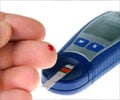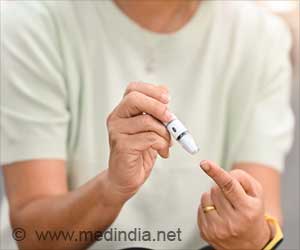An alarming survey reveals that over 11% of Indians suffer from diabetes and 36% from hypertension.
- A shocking survey reveals that 101 million Indians have diabetes and 315 million suffer from hypertension
- Goa has the highest prevalence of diabetes (26.4%) and Punjab is home to the highest number of hypertension cases (51.8%)
- Dyslipidemia, defined as an imbalance of lipids such as cholesterol, low-density lipoprotein cholesterol (LDL-C), triglycerides, and high-density lipoprotein (HDL), affects an alarming 81.2% of Indians
101 Million Indians have Diabetes, 315 Million Suffer From Hypertension
According to the largest epidemiological study on diabetes and noncommunicable diseases (NCD), India had 101 million individuals with diabetes, 136 million with prediabetes, and 315 million with high blood pressure in 2021.The Madras Diabetes Research Foundation (MDRF) study, conducted in collaboration with the Indian Council of Medical Research (ICMR) and funded by the Ministry of Health and Family Welfare, also discovered that the prevalence of generalized obesity and abdominal obesity in India was 28.6% and 39.5%, respectively.
According to the estimate, 254 million Indians had generalized obesity and 351 million had abdominal obesity in 2021.
Indian States and Their Rates of Diabetes and Hypertension
The team discovered that the prevalence of diabetes in India was around 7.5% in 2017, implying that the burden has increased by more than 50% since then.Among the states, Goa (26.4%) had the greatest prevalence of diabetes and Uttar Pradesh (4.8%) had the lowest, while Sikkim (31.3%) and Mizoram (6.8%) had the highest and lowest burdens of prediabetes, respectively.
According to the study, Punjab had the highest prevalence of hypertension (51.8%), while Meghalaya had the highest burden (24.3%).
Lifestyle Choices are the Culprits for the Spike in Cases
"The steep increase in NCDs can be attributed mostly to the lifestyle choices of people such as diet, physical activity, stress levels, etc. The positive news is that interventions can be used to curb the trend. Our study has multiple implications for the planning and provision of health care in India," Dr. R. M. Anjana, President of MDRF."The diabetes epidemic in India is in transition, with some states having already reached their peak rates while others are just getting started. These states may see an increase in prevalence over the next 3-5 years before plateauing," Anjana, lead author of the study, said.
The findings, which analyze the burden of NCDs across states, are based on a survey of 1,13,043 (over 1.1 lakh) people (33,537 urban and 79,506 rural residents) conducted between 2008 and 2020 in 31 states and Union Territories across the country.
According to the study, an alarming 81.2% had dyslipidemia, which is defined as an imbalance of lipids such as cholesterol, low-density lipoprotein cholesterol (LDL-C), triglycerides, and high-density lipoprotein (HDL).
Except for prediabetes, all metabolic NCDs were more common in urban regions than in rural regions. In many states with a lower human development index, the ratio of diabetes to prediabetes was less than 1.
"Our study results have multiple implications for the planning and provision of health care in India," said V. Mohan, Chairman, of Dr. Mohan's Diabetes Specialities Centre (DMDSC) and MDRF.
"State governments in India, who are primarily in charge of providing healthcare in their respective regions, will be especially interested in the detailed state-level data on these NCDs as it will allow them to develop evidence-based interventions to successfully halt the progression of NCDs and manage their complications,” Mohan, senior author of the study, said in a statement.
The survey was done in various phases by the team, which included researchers from the All India Institute of Medical Sciences (AIIMS) in New Delhi, utilizing a stratified multistage sample strategy with three-level stratification based on geography, population size, and socioeconomic status of each state.
"The prevalence of diabetes and other metabolic NCDs in India is considerably higher than previously estimated. While the diabetes epidemic is stabilizing in the more developed states of the country, it is still increasing in most other states," the authors of the study said (1✔ ✔Trusted Source
Metabolic non-communicable disease health report of India: the ICMR-INDIAB national cross-sectional study (ICMR-INDIAB-17)
Go to source).
"Thus, there are serious implications for the nation, warranting urgent state-specific policies and interventions to arrest the rapidly rising epidemic of metabolic NCDs in India," they said.
Reference:
- Metabolic non-communicable disease health report of India: the ICMR-INDIAB national cross-sectional study (ICMR-INDIAB-17) - (https://www.thelancet.com/journals/landia/article/PIIS2213-8587(23)00119-5/fulltext)
Source-Medindia
















